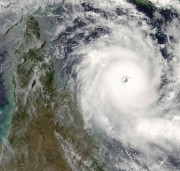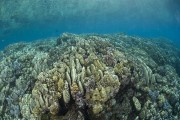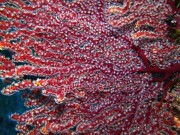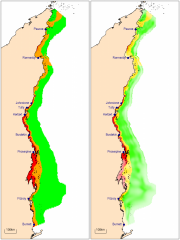Dr Katharina Fabricius
Author of

Tropical storms (cyclones, hurricanes or typhoons) are the most severe form of mechanical disturbance of coral reefs. In 2005, the severe Tropical Cyclone Ingrid crossed the Far Northern Great Barrier Reef. This storm provided a unique opportunity to improve understanding of the extent and type of damage inflicted on inshore and offshore coral reefs along a gradient of wind speeds. Surveys of 82 sites on 32 reefs along the wind gradient showed that the types and intensity of disturbance were well explained by local maximum wind speed, and by spatial and biotic factors. While offshore reefs had the deepest depth of damage, inshore reefs had the greatest rates of coral breakage and dislodgement. On a severely affected inshore reef, hard coral cover decreased about 8-fold, taxonomic richness decreased 2.5-fold, the density of coral recruits decreased by 30%, while massive coral cover remained unaltered. Maximum winds <28 cm s-1 for <12 hours inflicted only minor damage on any reef, but winds >33 m s-1 and >40 m s-1 caused catastrophic damage on inshore and offshore reefs, respectively. Observations from this cyclone were used to predict potential changes in storm-related coral loss at a scenario of altered cyclone intensity.

Identifying the principal spatial patterns in biodiversity of corals is a requirement for effective ecosystem management. This article summarises large-scale patterns in hard coral biodiversity on the GBR.
The study is based on one-off surveys of 599 sites on 118 inshore reefs and 17 mid-and outer-shelf reefs along 1300 km of Australia’s Great Barrier Reef (GBR) (Fig. 1), conducted between 1994 and 2001. More details are found in Devantier et al. (2006).

Water quality (WQ) is an important determinant of ecosystem health in the Great Barrier Reef (GBR). This articles summarise some of the main spatial patterns and seasonal changes in water quality. The information is based on two Reports, Death (2007), and De’ath and Fabricius (2008).
The main findings are:
(1) Space-time models are poor predictors of WQ parameters. Between 0% and 40% of the variation in WQ parameters is typically predictable, with chlorophyll and suspended solids being well predicted and dissolved forms of nitrogen being very poorly predicted.

Soft corals, sea fans and gorgonians are common names for a group with the scientific name Octocorallia or Alcyonacea. About 100 genera in 23 families are known to occur in shallow Indo-Pacific coral reefs. Octocorals are ecologically important components of the coral reef landscape, and being beautiful and colourful, are an attraction for divers.

The study reported here defines water quality guideline values for the Great Barrier Reef (GBR). The analyses showed that algal cover and the richness of hard corals and octocorals were strongly related to chlorophyll and water clarity. The richness of both hard corals and phototrophic octocorals decreased with increasing turbidity and chlorophyll. Heterotrophic octocorals increased with greater turbidity and slightly decreased with higher chlorophyll. Guideline values of maximum mean annual concentrations of chlorophyll of 0.45 g/L and minimum mean annual Secchi depth of 10 m are proposed for both coastal and inshore zones in all regions (at shallower depths the sea floor will be visible).




